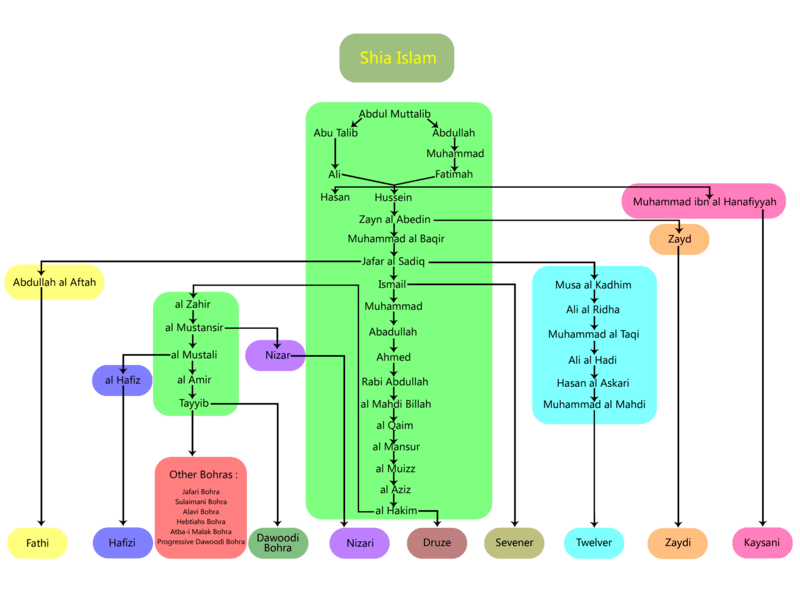Hafizi
Isma‘ilism |
|---|
 |
|
Branches / sects
States / region People
Others |
|
|
|
|
The Hafizi/Hafiziyyah or Majidi/Majidiyyah was a branch of Mustaali Ismailism that believed that the current ruler of the Fatimid Caliphate after the reign of Al-Amir Bi-Ahkamillah, Al-Hafiz was also the Imam of the Time as well as his descendants. The Hafizi sect disappeared completely after the collapse of the Fatimid Caliphate in 567 AH/1171 CE as they joined the Taiyabi sect. The sect was suppressed by the Ayyubid Dynasty that had overthrown the Fatimid Dynasty [1]
List of Hafizi Ismaili Imams
Al-Hafiz is the son of Abul Qasim Muhammad a son of Al Mustansirbillah and an uncle of Al Musta'alibillah.
21. Abul-Maymun Abdul Majeed Al-Hafiz Li-Dinillah, b. c1076 - 1149 CE
22. Abu Mansur Ismail Az-Zafir Bi-Amr-Allah, b. 1133 – 1154 CE
23. Abul-Qasim Isa Al-Faiz Bi-Nasr-Allah, b. 1149 - 1160 CE
24. Abu Muhammad Abdullah Al-Adid Li-Dinillah bin Yusuf, b. 1149 - 1171 CE, Grandson of Al Hafiz-li-dinillah, Yusuf was the son of Al Hafiz-li-dinillah. Died imprisoned in the Fatimid palace in Cairo under Saladin
25. Daud Al-Hamid-lil-lah, d. 1207 CE. Died in prison under the Ayyubid dynasty.
26. Sulayman Badruddin, d. 1248 CE without issue. Died in prison under the Ayyubid dynasty. The last Imam of the Hafizi Ismailis.
The Hafizi sect lived on into the 14th century CE with adherents in Northern Egypt and Syria but had died out by the 15th century CE.
History, Shia Islam and, Hafizi

See also
Sources
- Barber, Malcolm (1994). The New Knighthood: A History of the Order of the Temple. Cambridge University Press. ISBN 0-521-42041-5.
- Daftary, Farhad (1998). A Short History of the Ismā'īlīs. Edinburgh: Edinburgh University Press.